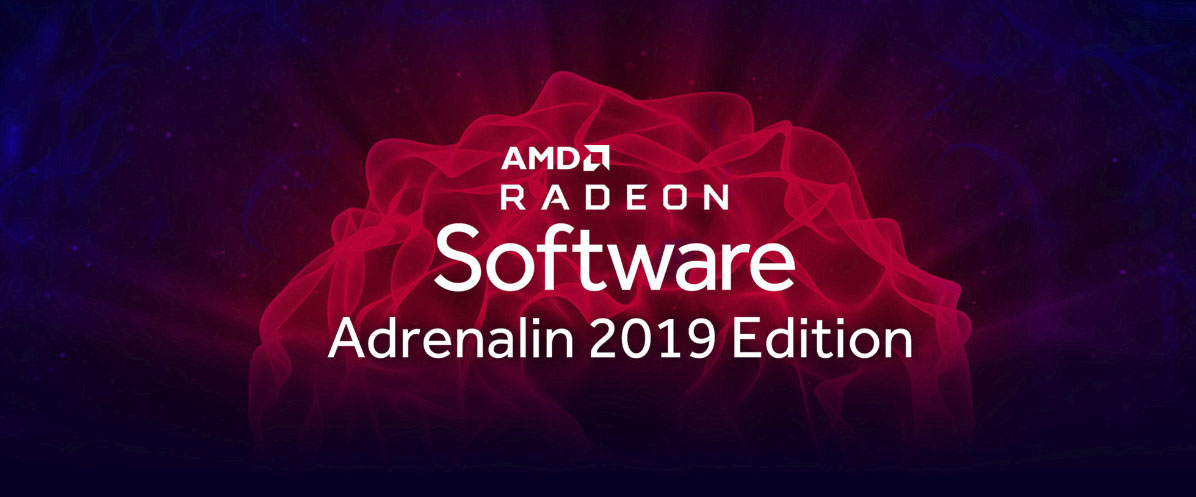AMD delivers numerous updates with its Radeon Software Adrenalin 2019 Edition
AMD enables game streaming with its latest annual update, plus other improvements.

AMD has released a major driver update each of the past several years. First there was the Crimson Edition, marking a major change to the previous Catalyst drivers in terms of UI and other elements. Then came Crimson ReLive, which added built-in streaming support and a few other tweaks. Last year was the Adrenalin Edition, and now we're on the Adrenalin 2019 Edition. While the name change this round isn't pronounced—AMD has simply added a year designation to the existing Adrenalin branding—under the hood there are quite a few updates. You can read the full list of changes over at AMD's blog, but I'll cover the highlights here.
First and foremost, for those that might want to play games away from their main PC, ReLive now supports game streaming. This works with mobile devices running either Android OS (5.0 or later) or iOS (version 10 or later) and is a free app called AMD Link. Streaming to another PC isn't directly supported, though there are plenty of other software options that already handle that use case. AMD promises 'low latency' gaming at up to 4k 60fps, provided your wireless network is up to snuff. AMD Link also let's you view video, images, performance metrics, and more.
Another update to AMD ReLive is that it now supports VR. There are options for both live streaming (via Steam, Steam VR, and the Radeon ReLive VR app), as well as viewing of VR surround video recordings of gameplay.
A host of updates and improvements to the Radeon Overlay are also part of the new Adrenalin 2019 package. FreeSync, WattMan, and performance metrics overlays are now readily accessible. Along with these is a new Game Advisor that will suggest ways to improve performance and/or increase image quality. Outside of the Radeon Overlay, a Settings Advisor will scan your games and recommend optimizations, and an Upgrade Advisor will check your hardware for minimum and recommended game compatibility specifications.
Finally, along with updates to Radeon Chill and WattMan (WattMan now includes Auto Overclock GPU and Auto Overclock Memory options, along with an Auto Undervolt GPU feature), AMD says the latest drivers improve performance in multiple games by a moderate amount—4 percent in Assassin's Creed Odyssey, 3 percent in Shadow of the Tomb Raider, 5 percent in Doom and Wolfenstein II, and 7 percent in Strange Brigade. Year over year, AMD says its driver updates have helped improve performance by "up to" 15 percent average gains relative to the Andrenalin Edition launched at the end of 2017. Some of those gains include games that weren't out in late 2017 however (eg, Battlefield 5, Assassin's Creed Odyssey, Far Cry 5, and Star Control Origins), meaning the 17.12.1 driver would have had zero targeted optimizations for such games.
Overall, we've reached the stage where AMD and Nvidia drivers are largely equal, at least in terms of features. ReLive is pretty much at parity with Shadowplay, drivers from both companies typically install without difficulties—and include clean install options as well. (And yes, there are occasional hiccups, from both sides.) And AMD's new "Adivsors" should do what GeForce Experience does for game settings. I'd even say AMD has a lead in some areas, like built-in support for overclocking (you need a third party app for that on Nvidia cards), plus Radeon Chill.
Of course there's ultimately the question of performance and value, and that's where AMD struggles a bit. It has nothing that can match the performance of the 1080 Ti right now, never mind the RTX 2080 and 2080 Ti. That may change in 2019, with Navi hopefully going up against the GeForce RTX line, but late 2019 is a long way off. Maybe we'll see a consumer version of Vega 7nm, but that hasn't been confirmed yet.
Keep up to date with the most important stories and the best deals, as picked by the PC Gamer team.
But if you're just looking for good drivers that get the job done, I haven't had any serious complaints about either side during 2018, and that looks set to continue into next year with the new Adrenalin 2019 Edition. You can download the new drivers now via AMD.
Jarred's love of computers dates back to the dark ages when his dad brought home a DOS 2.3 PC and he left his C-64 behind. He eventually built his first custom PC in 1990 with a 286 12MHz, only to discover it was already woefully outdated when Wing Commander was released a few months later. He holds a BS in Computer Science from Brigham Young University and has been working as a tech journalist since 2004, writing for AnandTech, Maximum PC, and PC Gamer. From the first S3 Virge '3D decelerators' to today's GPUs, Jarred keeps up with all the latest graphics trends and is the one to ask about game performance.


